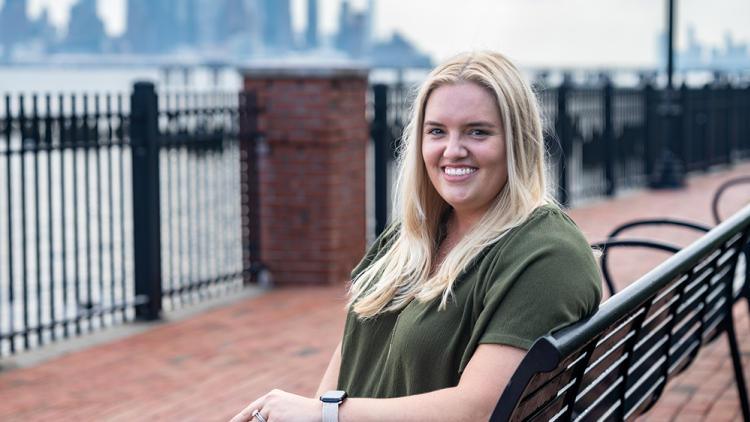Meet Sara Swanson, '22 MBA, Executive Director, Product Design at J.P. Morgan
Sara Swanson had two art degrees and a good career as a designer, but she wanted to break into higher-level roles. When she saw that Stevens was bringing graduate-level courses to her workplace, Swanson decided to pursue an MBA, which she completed this December.
“In the past, I’d taken basic math and basic science courses, but I hadn’t taken accounting and finance. I felt like getting an MBA would help my business acumen which would help me in the short term, but also help me reach my aspirational goals to be in a leadership space,” she says.
Pursuing her MBA has helped her understand business pressures and various user needs at her company. “I feel like my education is helping me be a more well-rounded design participant, especially at a place that is a financial institution,” she says. “My classes in finance and accounting helped to ground me a little bit and helped me understand the subject matter that my users deal with on a day to day. Being able to empathize more with my business stakeholders and my management has been really helpful.”
Since starting her MBA, Swanson has advanced her career, going from designer to Vice President and more recently to Executive Director of Product Design. She says modestly that while she’s not in charge of a whole market or area, she feels that her time in the program helped her get promoted sooner. “Getting my MBA in technology management helped me reach my aspirational goals to be in a leadership space,” she says. “I was getting more of a bird's-eye view which helped me to think about presenting to stakeholders in a way that was meaningful to them and understanding the bottom line.”
Swanson adds that what she enjoys most about designing products is getting to collaborate with various teams to deliver a meaningful product to their customers. “It’s not just the moment a customer engages with a digital interface but rather the entire end-to-end, including their environment, when they pick up a digital tool, why they pick it up and in what context,” she says. “It is always worth the time investment to truly understand our customer needs and align them with business and organizational goals.”
Swanson was able to work full-time while completing her MBA. Her classes were held once a week in her office building in Jersey City, and online during the pandemic. Because of the part-time nature of the program, the MBA took Swanson five years to complete. Swanson found the part-time schedule to be a great fit for her. “I actually loved my job and wanted to continue to be able to do that. Finding a way to do both continued education and work was important to me. The program was manageable,” she says. “I worked, I got married during the time of our program. I bought a house. I was able to have a life, work, get educated, and still live a little bit.”


